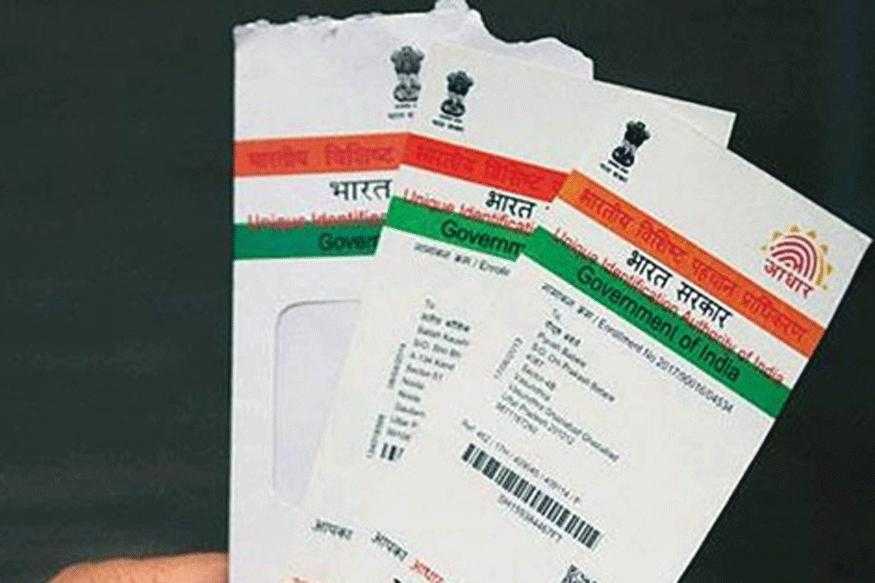The Indian voter ID card is issued by the Election Commission of India. The voter card is issued to all Indian citizens who have attained the age of 18 years and qualify to be a voter. It has a general identity, address, and age proof. It is also known as Electoral Photo ID Card (EPIC). Its benefit includes citizenship, proof for buying a mobile phone SIM card or applying for a passport.
On the other hand, there’s Aadhaar containing a photograph of the holder, full name, date of birth, gender, QR Code, Aadhaar No, name of the father (or husband), address, captures fingerprints and iris scans. Presently, Aadhaar system is the world’s largest biometric database.
Aadhaar has now become mandatory for availing almost any service. In Tamil Nadu, it is mandatory for providing ration. It is also being used for forensic purposes since it is a bio-metric identification. It is used in Direct Benefit transfer (DBT) as well. Aadhaar-enabled biometric attendance systems are used by central government agencies. In Hyderabad region of Telangana state, Karnataka, Aadhaar numbers were linked to ration cards to remove duplicate ration cards. It is also used for forensic purposes.
On 16 June 2017, the central government declared that Aadhaar will be mandatory for opening new bank accounts and for transactions above Rs. 50,000. All existing account holders will also have to submit their Aadhaar details by December 31, 2017, failing which accounts will be deemed invalid.
The Election Commission of India (ECI) is a constitutional body responsible for administering elections in India according to the rules and regulations mentioned in the Constitution of India. In its assigned role, the most crucial challenge before the Election Commission of India is to implement norms and the Model Code of Conduct to ensure free and fair elections in the country. Instead of issuing or meddling with cards if it is given only to conduct election, it shall be better.
Also, Voter Verified Paper Audit Trail (VVPAT) machines ensure that transparency in the election process remains intact. According to an estimate, the Election Commission needs 16,15,066 VVPATs by 2019, when the Lok Sabha elections would be held simultaneously with state elections in Andhra Pradesh, Telangana, Sikkim, Odisha, Arunachal Pradesh, Maharashtra and Haryana. One machine costs Rs 19,650. It gives out a paper slip after a voter casts their vote. If we buy 19650 X 1615099= 31736695350.
Also Read: Gandhi or Godse: Who should India be known for?
From the beginning of the project in 2009 through March 31, 2017, the government spent a total of Rs 87.939 billion (US$1.4 billion) on the Aadhaar project. So why is not the Voter ID Card be merged with Aadhaar? So that we have one card which has in it, PAN card, ration/PDS card, voter identity card, driving license, government photo ID card, NREGS job card, photo ID issued by a recognised educational institution, arms license, photo bank ATM card, photo credit card, pensioner photo card, freedom-fighter photo card, kisan photo passbook, CGHS/ex-servicemen contributory health scheme card and so on.
This can save Tax Payers money and bring the idea of ‘One Nation, One ID Card’ through which all type of anti-social elements can be checked in one go. Biometric technologies in national ID systems serve to accurately authenticate valid national ID cards and avoid the risk of issuing duplicate cards to citizens. This extra layer of identity verification vastly increases the security in government and commercial environments where confirming the identity of the individual is imperative.
For fast and accurate verification of each voter’s identity on Election Day, governments are able to employ biometrics and a centralised voter ID database with all eligible voters’ data to prevent election fraud. Employing the world’s fastest and most accurate biometric identification technology, the speed and accuracy of Voter ID solution ensure that eligible voters are identified quickly to avoid long queues.
However the problem is this – no single ID is comprehensive, and each relies on another form of verification. There is a need for consolidating all of these into a single ID. At the same time, the government needs to ensure that these IDs are not replicable (protection of identity), and access to information about individuals is limited (privacy).
Disclaimer: The opinions expressed in this article are the personal opinions of the author. The facts and opinions appearing in the article do not reflect the views of NEWSD and NEWSD does not assume any responsibility or liability for the same.


















